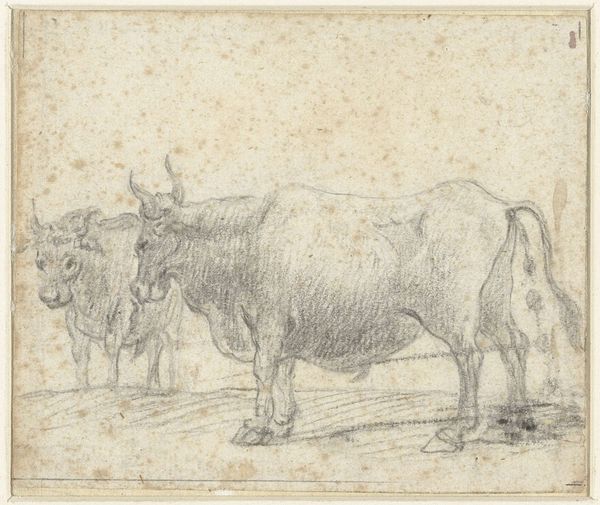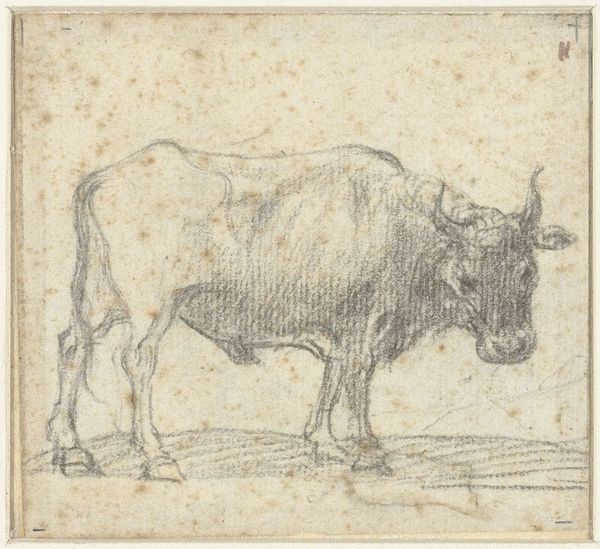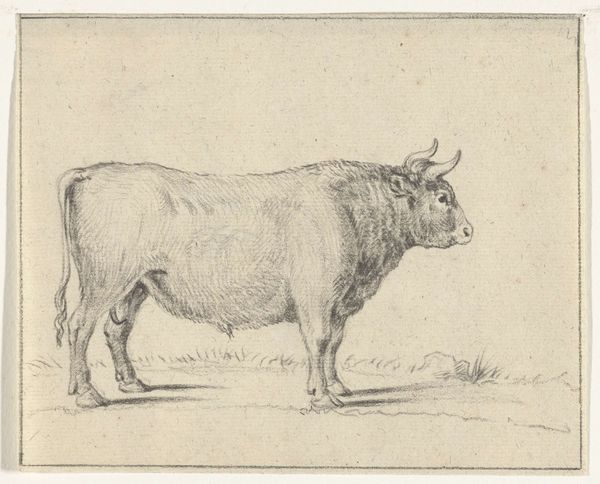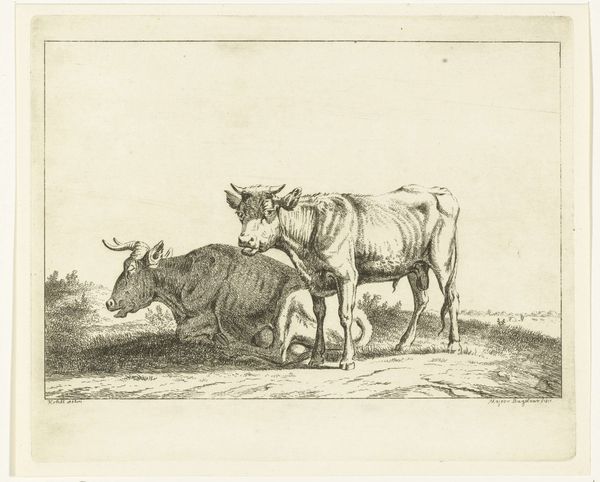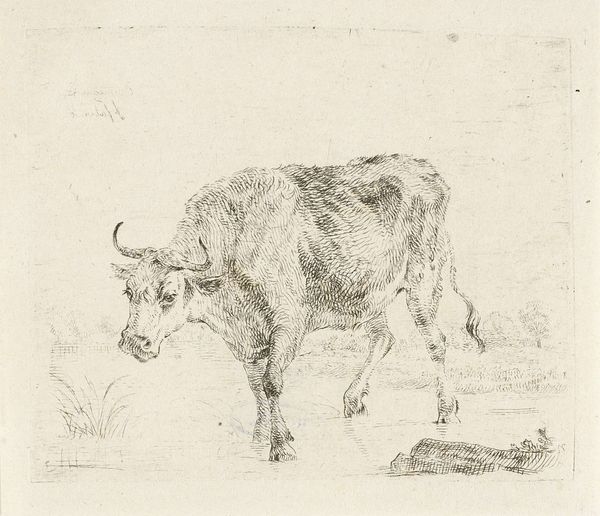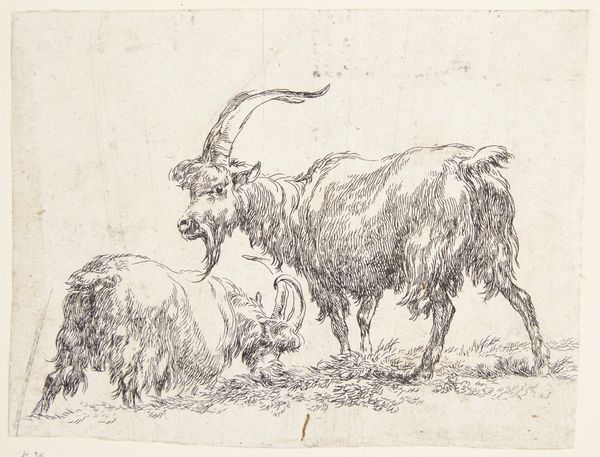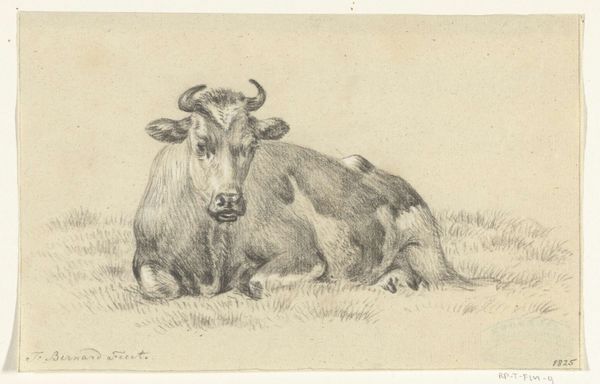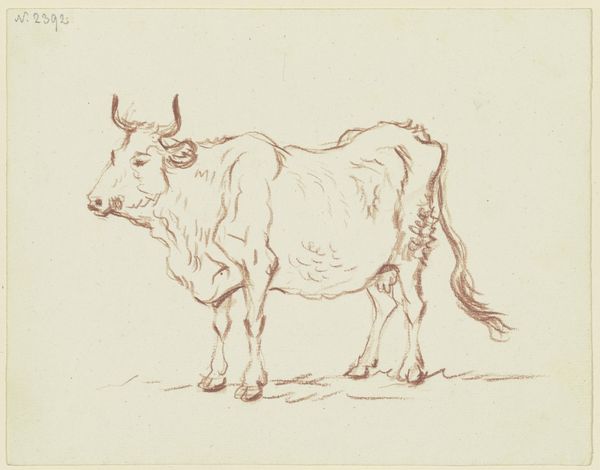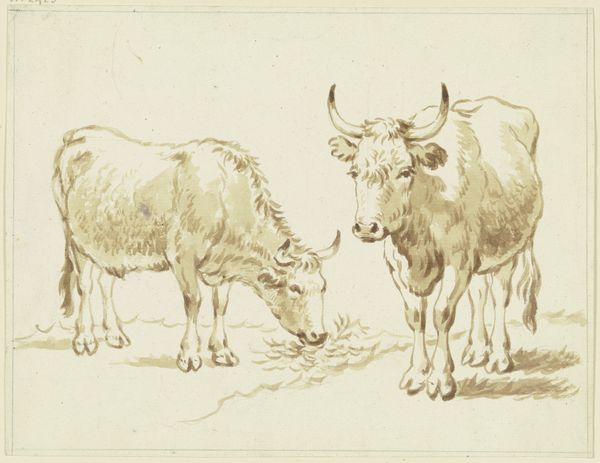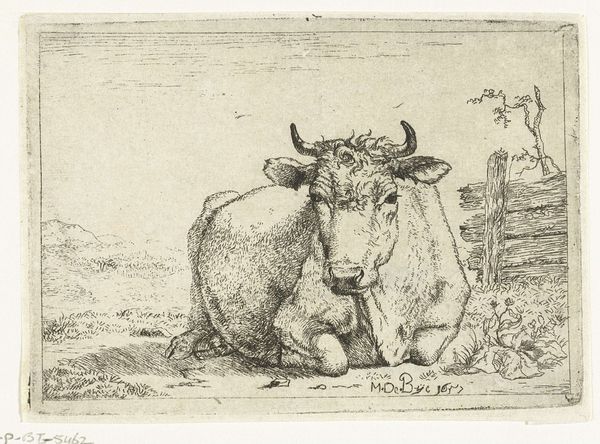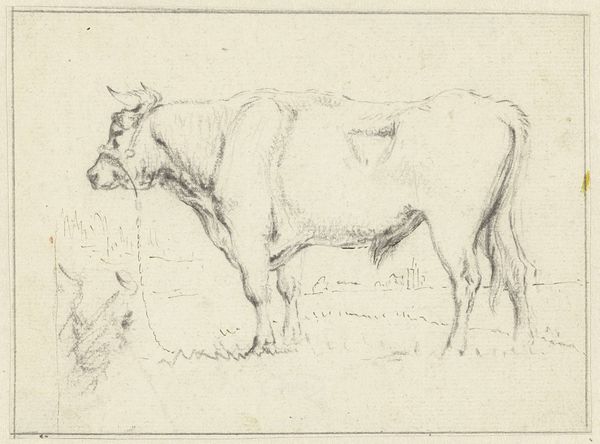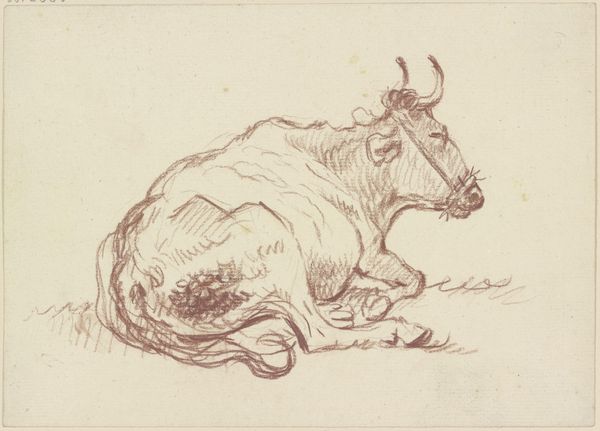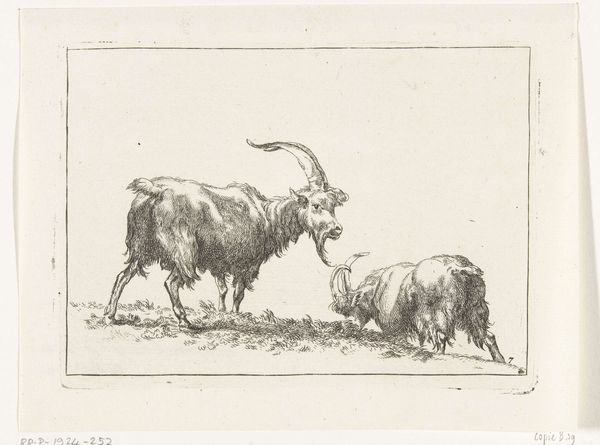
drawing, pencil, graphite
#
drawing
#
baroque
#
pencil sketch
#
landscape
#
pencil
#
graphite
#
realism
Dimensions: height 90 mm, width 103 mm
Copyright: Rijks Museum: Open Domain
Curator: Look at this lovely, understated sketch. It’s called “Two Cows in the Campagna,” made with graphite and pencil sometime between 1635 and 1645 by Claude Lorrain. It is held here at the Rijksmuseum. Editor: I immediately find myself wondering about animal rights and industrial farming, given our contemporary understanding of animal sentience versus our history of reducing them to property or food sources. This drawing strikes me as melancholy; the one cow looks almost confrontational. Curator: Interesting take. While our awareness has certainly evolved, it’s also true that images of pastoral harmony often mask deeper class and labor disparities. Symbolically, the cow has often represented abundance and nourishment. Lorrain’s choice here, it seems, seeks to create a very unassuming, quotidian image of cattle, reflecting rural Italian life. Editor: Right, and who is this vision of Italian rural life for? During the baroque period, which we find it situated in, these idealized rural scenes become incredibly popular as status symbols, usually divorced from the actual realities of peasant life. Was Lorrain complicit, or offering a more nuanced critique? The rough quality and muted palette leave an unsettling air to the artwork. Curator: I appreciate your reading. I also think about how Lorrain uses light—even in a sketch, we can see a preoccupation with how the sun illuminates the scene, softening the cows’ forms and making them more approachable. Perhaps he intends us to connect with the animals through light. Editor: I can see how Lorrain uses light and shading to emphasize a softened look of the cows, though I’m reluctant to disregard the socio-political background. To simply present animals grazing and existing together feels loaded to me. Curator: Indeed, these pastoral scenes carry within them echoes of larger cultural values and perhaps anxieties around societal order, which brings me back to the drawing’s simple directness as a potential symbol of innocence, contrasting the era’s complicated history. Editor: An image of simple pastoral beauty also presents opportunities for social analysis through art history. This gives viewers a means for both engaging with Lorrain’s composition and analyzing contemporary approaches to it. Curator: Thanks to your thoughtful comments, I will reconsider some aspects of this drawing with newfound critical sensitivity. Editor: It’s artworks like these that reveal multiple interpretive avenues into their history. Thanks for discussing it with me.
Comments
No comments
Be the first to comment and join the conversation on the ultimate creative platform.
